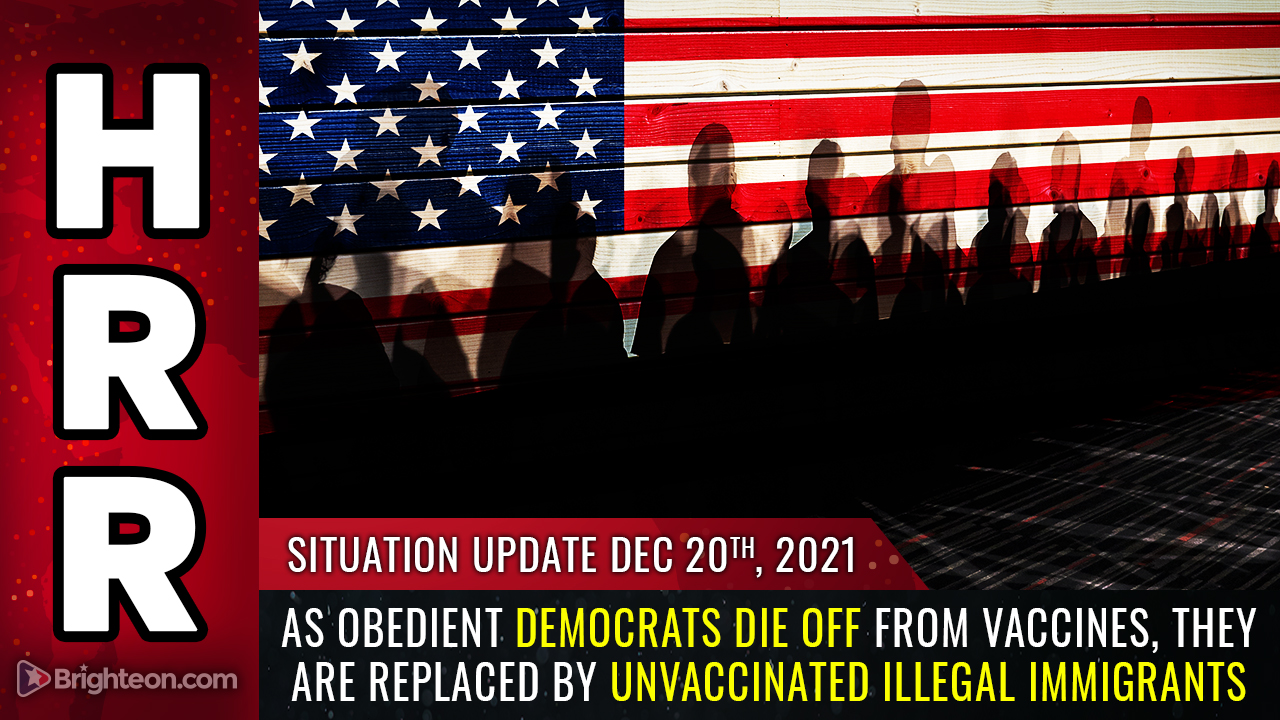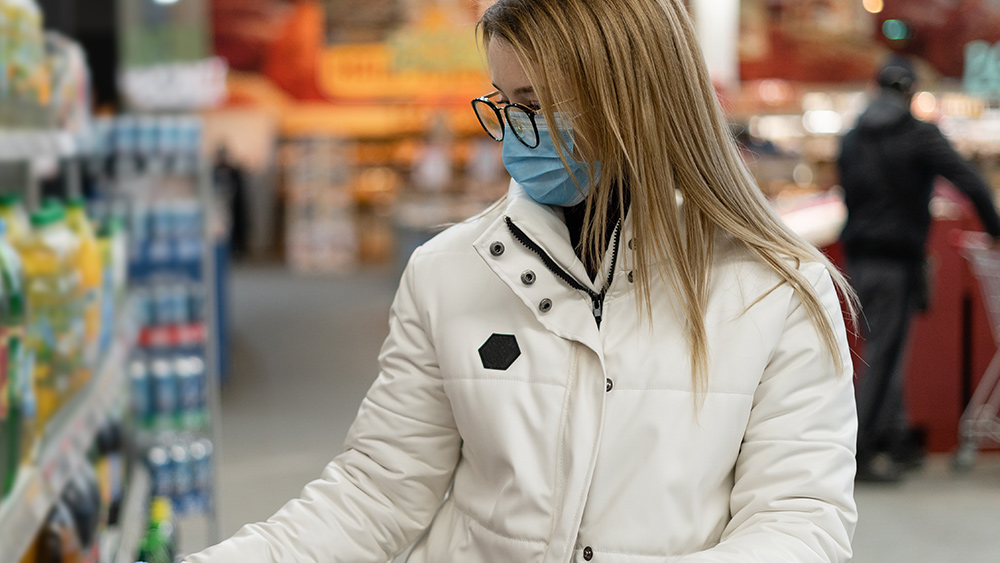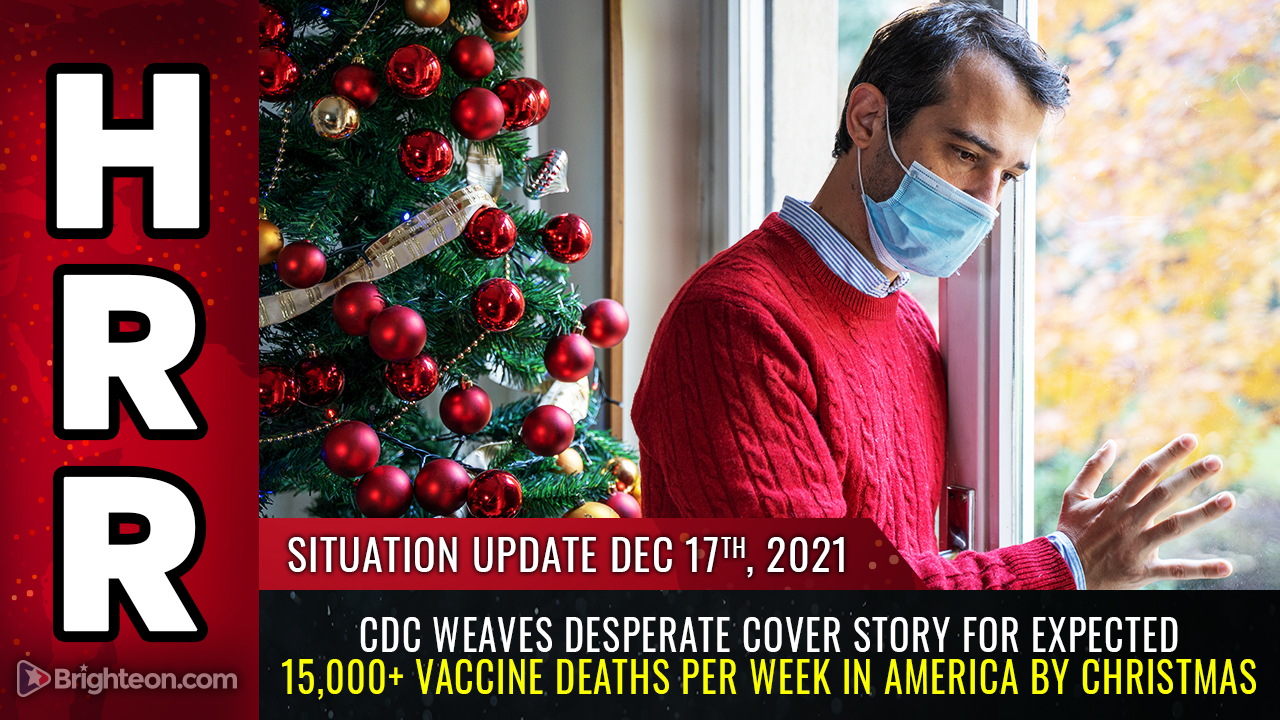Over 28 million people in China under lockdown as locally transmitted coronavirus cases appear to rise once more
01/26/2021 / By Arsenio Toledo

More than 28 million people in China are back in lockdown as the communist nation posted its largest daily jump of Wuhan coronavirus (COVID-19) cases since July on Wednesday, Jan. 13, according to media reports.
Editor’s note: We don’t believe anything coming out of China, so take this “official” news with a grain of salt.
Most of the new patients were reported in Hebei, a province surrounding the country’s capital of Beijing. Almost all the other cases were reported in Heilongjiang province in China’s far northeast. (Related: Anthony Fauci finally acknowledges that China played significant role in early spread of coronavirus.)
Official data from China’s National Health Commission shows that over 115 new confirmed cases were reported, compared with 55 just a day earlier. One-hundred and seven cases were local infections, with 90 coming from Hebei and 16 from Heilongjiang.
Health authorities have also reported 38 asymptomatic cases, a drop from 81 cases the previous day. Chinese health guidelines do not classify asymptomatic cases as confirmed cases, so they have not been added to the country’s official tally.
Because of the surge in cases, Hebei has placed three cities in lockdown – Shijiazhuang, Xingtai and Langfang. Heilongjiang placed the city of Suihua – which is directly to the northwest of the provincial capital – into lockdown as well. These four cities have a total population of around 28.6 million people.
The wave of infections and the subsequent lockdowns come just one month before the Chinese Lunar New Year, when hundreds of millions of people are expected to travel from the cities where they work back to their hometowns to celebrate the holiday with relatives and other loved ones.
According to Feng Zijian, deputy director of the Chinese Center for Disease Control and Prevention, the Chinese Communist Party does not expect a “massive” resurgence in coronavirus cases during the Chinese New Year so long as people follow lockdown protocols and the authorities enforce their control measures properly.
New spread of coronavirus infections triggers new round of restrictive lockdowns
In the city of Langfang in Hebei, local authorities placed its five million residents under strict home quarantine for seven days starting on Tuesday as officials planned to test almost every single resident for coronavirus. Similar quarantine measures were imposed on the provincial capital of Shijiazhuang last week.
Furthermore, Shijiazhuang has been cordoned off from the rest of China. All roads leading to the city have been shut down, people and vehicles have been barred from leaving and public transportation within the city has been temporarily halted.
The provincial government of Hebei has also postponed an annual meeting wherein the province’s top officials would set the region’s policies for the coming year. Hundreds of provincial leaders and political advisers would typically gather during this meeting, which precedes China’s national legislative conclave to be held in March.
Heilongjiang province declared a COVID-19 emergency on Wednesday. A majority of the cases in Suihua have been found right in the middle of the city, in a county known as Wangkui.
Tieli, a small city of just around 300,000 people directly to the northeast of Suihua, has ordered a self-imposed three-day lockdown, preventing all people and vehicles from leaving the city as Tieli follows the nation’s new COVID-19 prevention measures.
China pushes through with mass vaccination program
According to health commission official Wang Bin, China has already administered more than 10 million vaccine doses. They are ramping up vaccine production and distribution efforts at the same time as they are increasing testing capacity. Now, the whole country is supposedly able to test around 12.55 million people per day.
In Beijing alone, the municipal government announced on Monday that they had inoculated more than one million residents, and hope to ramp up distribution capacity to be able to provide 100,000 shots per day until the Chinese New Year on Feb. 12.
Nationally, the CCP wants to inoculate 50 million people – mostly key workers such as those working in healthcare – before the Lunar New Year. This means that the national government wants to administer vaccines to around 1.248 million people per day.
Despite China’s push for massive and mandatory vaccinations, the CCP is still relying on lockdowns to control the outbreaks and the population. The health commission has already told citizens to limit large gatherings and to do all their shopping online.
Health authorities have also begun discouraging workers from returning to their hometowns for the new year. Some local government units have even started offering incentives of extra wages to people who choose to stay in their respective cities for the holidays. Private corporations have also been told to stagger holidays to try and reduce the number of people who will be traveling.
Other local government units have also imposed new rules to disincentivize travel. Many are now requiring returnees to produce a negative coronavirus test, even those who are coming from areas deemed by the national health authority to be low risk. Other local governments are asking residents to report travel plans beforehand.
As of press time, the supposed number of confirmed COVID-19 cases in China (excluding Macau and Hong Kong) now stands at 87,706, while the reported death toll remains unchanged at 4,634.
Learn more about the progression of the coronavirus pandemic in China, the United States and in other parts of the world by reading the latest articles at Pandemic.news.
Sources include:
Tagged Under: Beijing, CCP, China, Chinese New Year, coronavirus, covid-19, Hebei, infections, lockdowns, outbreak, pandemic, superbugs
RECENT NEWS & ARTICLES
COPYRIGHT © 2017 PLAGUE INFO





















